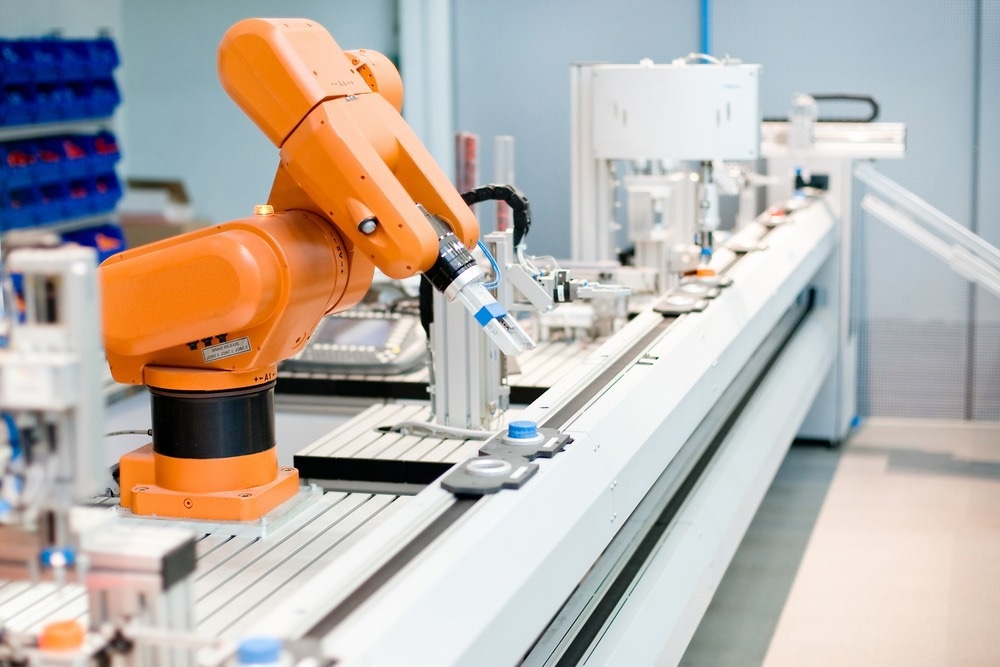Just like the factory and the home, the 21st-century research laboratory is increasingly being taken over by lab automation technologies that utilize robotics and artificial intelligence (AI).

Image Credit: SFC/Shutterstock.com
Lab automation is enabling scientists to conduct investigations that would have been prohibitively impractical and time-consuming with manual processes. Meanwhile, the technology that makes lab automation solutions work is becoming smarter, cheaper, and easier to use with every passing year.
What is Lab Automation?
Lab automation is the application of automation technologies to laboratory equipment, systems and processes. It enables bulk sampling and experimentation through automating processes and can even be used to develop research questions and methods without human supervision using machine learning algorithms.
Lab automation also increases a lab’s productivity, improves the quality as well as quantity of experimental data, and enables labs to cycle through processes and repetitive tasks faster.
The first fully automated laboratory was opened in the 1980s, and automated equipment has progressed significantly since then.
Now, in universities, public institutions, and corporate research and development departments alike, many facilities simply have to use lab automation to stay competitive.
Lab automation has also enabled specialist laboratories and methods to develop that would have otherwise been impossible. Large-scale biorepositories such as seed and DNA banks, computerized diagnostics, automated clinical and analytical tests, combinatorial chemistry, and high throughput screening were all made possible by developments in lab automation.
Lab Automation Relies on Several Enabling Technologies
Laboratory robotics is a branch of robotics engineering and development that creates machines specifically for automated work. Lab robots need to be extremely precise and reliable, so many are made with a single purpose in mind.
Autosamplers are the most widely used for stationary automated devices in lab automation projects.
Lab automation also relies on cutting-edge AI. AI is the application of computer processing to perform a task in a way that mimics intelligence. Machine learning programs (mentioned above) are a kind of AI in that they make computers read data and process it for information that informs subsequent actions – in effect, making the computer machine “learn” from the data.
Artificial neural networks (ANNs) are another kind of AI program. These use advanced network theory and mathematics to parse vast amounts of data very quickly, in a way that is analogous (but not at all equivalent) to the synaptic networks of animal brains.
Finally, lab automation involves developing new processes and methodologies that make the most effective and appropriate use of workplace automation technologies.
Inside the Lab Where Robots Run Their Own Experiments
Video Credit: Seeker/YouTube.com
Challenges for Lab Automation: Accessibility, Interoperability, and Cost
While the first fully automated laboratory was already in operation and shown to work by the late 1980s, the majority of labs around the world continued with traditional, manual technologies and methods.
The main reason for this is cost.
Lab automation requires a significant upfront investment, which a non-profit research institution would be unable to recover from increased productivity.
There is also a barrier to investing in lab automation technology from the historically poor interoperability between different manufacturers’ equipment, software, and lab methods. Labs do not want to invest in devices that will not work with existing instrumentation or processes, or which may not work with future developments.
Especially in the early days of lab automation, a fair amount of specialist training was also required to use the various management systems behind laboratory automation solutions effectively. This accessibility issue has historically presented another barrier to widespread adoption.
How Can Lab Automation Overcome These Challenges?
These challenges are by no means insurmountable, and as lab automation technology and methods have developed in recent years, they have also become more accessible.
Scripting languages such as Autoit enable researchers who are not computer scientists to link up machines and devices from different manufacturers.
This means that low-cost instruments and devices (like self-built machines from open source designs) can be made to link up with other laboratory instruments and components.
Researchers can also adapt cheaper technology from other industries or consumer markets to work with lab devices, for example, by using low-cost servo motors with 3D printed frames instead of specialist lab robots.
Another trend that is making lab automation more accessible today is the emergence of a kind of experimentation as a service model. Some companies are investing in state-of-the-art lab automation facilities, and allowing small research teams to utilize them as and when they need to.
Finally, the open source movement – which has its origins in free and open source software (FOSS) development – has been largely embraced by the scientific community.
This means that there are many examples of peer-reviewed, experimentally validated “do it yourself” instructions for replacing or introducing lab equipment, including lab automation technologies.
These developments are making automated labs much more accessible, while also giving scientists more opportunities to creatively devise instruments and experiments that will get the results they are looking for.
References and Further Reading
Boyd, J. (2002). Robotic Laboratory Automation. Science. https://doi.org/10.1126/science.295.5554.517.
Carvalho, M.C. (2013). Integration of Analytical Instruments with Computer Scripting. Technology Briefs. https://doi.org/10.1177/2211068213476288.
Chiu, S-H., and P.L. Urban (2015). Robotics-assisted mass spectrometry assay platform enabled by open-source electronics. Biosensors and Bioelectronics. https://doi.org/10.1016/j.bios.2014.08.087.
Gibney, E. (2016). ‘Open-hardware’ pioneers push for low-cost lab kit. Nature. https://doi.org/10.1038/531147a.
Urban, P. (2016). Self-built labware stimulates creativity. Nature. https://doi.org/10.1038/532313d.
Disclaimer: The views expressed here are those of the author expressed in their private capacity and do not necessarily represent the views of AZoM.com Limited T/A AZoNetwork the owner and operator of this website. This disclaimer forms part of the Terms and conditions of use of this website.